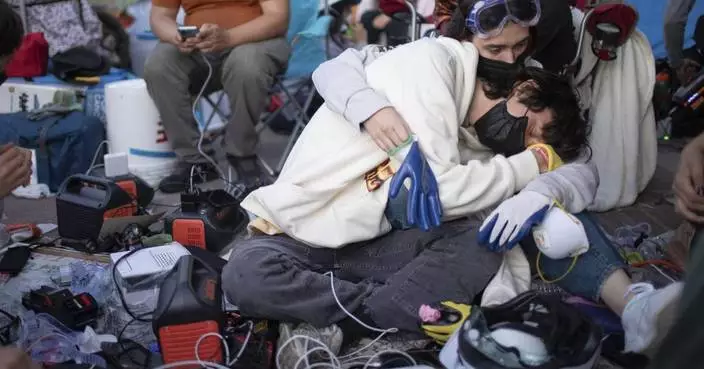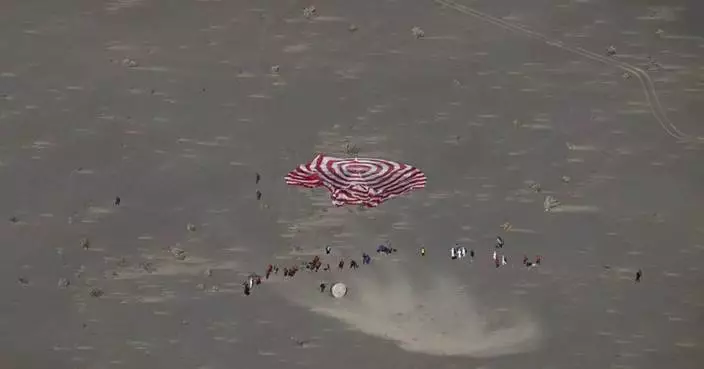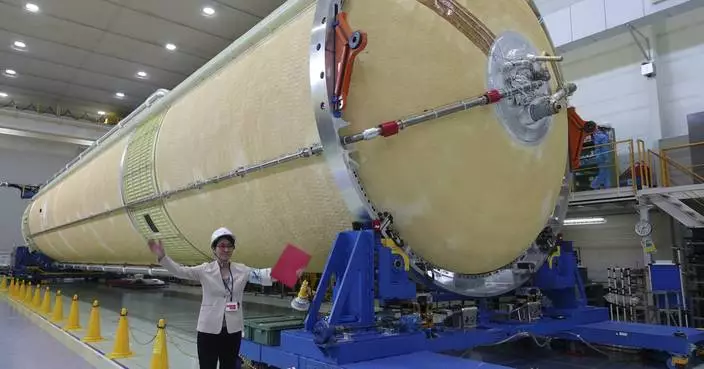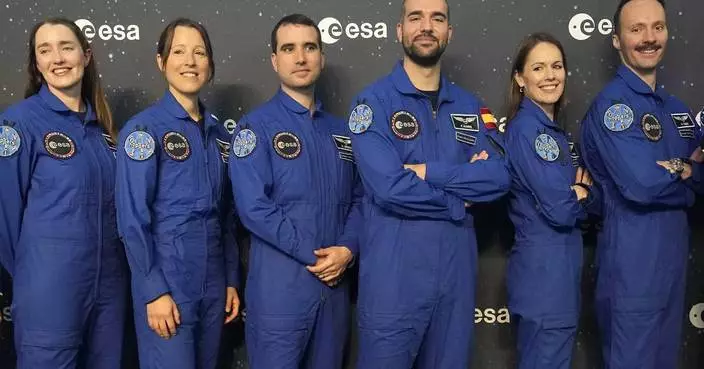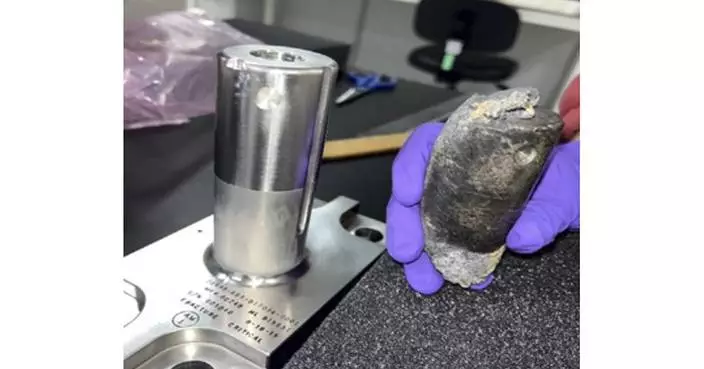Astronauts got a mouth-watering haul with Tuesday's Earth-to-space delivery — pizza and ice cream.
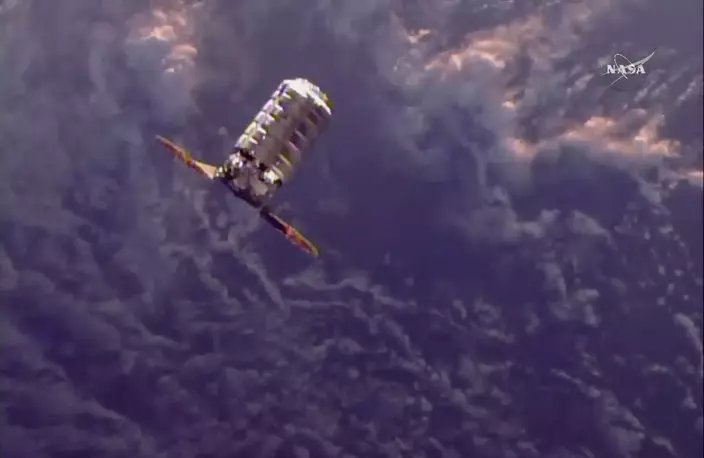
The Cygnus cargo spacecraft moves towards the International Space Station, Tuesday, Nov. 14, 2017, 260 miles (418 kms.) above the earth. (NASA TV via AP)
A commercial supply ship arrived at the International Space Station two days after launching from Virginia. Besides NASA equipment and experiments, the Orbital ATK capsule holds chocolate and vanilla ice cream for the six station astronauts, as well as make-your-own flatbread pizzas.
Click to Gallery
Astronauts got a mouth-watering haul with Tuesday's Earth-to-space delivery — pizza and ice cream.
A commercial supply ship arrived at the International Space Station two days after launching from Virginia. Besides NASA equipment and experiments, the Orbital ATK capsule holds chocolate and vanilla ice cream for the six station astronauts, as well as make-your-own flatbread pizzas.
Nespoli used the space station's robot arm to grab the cargo ship, as they zoomed 260 miles above the Indian Ocean.
In all, the capsule contains nearly 4 tons of cargo. It's named the S.S. Gene Cernan in honor of the last man to walk on the moon, who died in January.
The supply ship will remain at the space station until the beginning of December, when it's cut loose with a load of trash. It will hover close to the orbiting lab as part of an experiment, then several mini satellites will be released and it will burn up in the atmosphere on re-entry.
Astronauts always crave pizza in orbit, but it's been particularly tough for Italy's Paolo Nespoli. He's been up there since July and has another month to go.
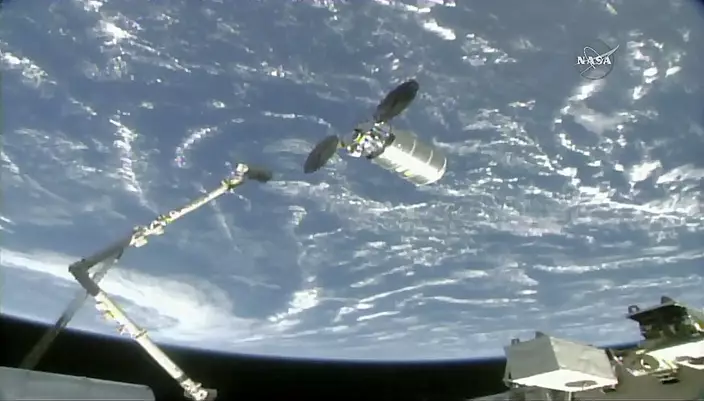
The International Space Station's robotic arm reaches to capture the Cygnus cargo spacecraft, Tuesday, Nov. 14, 2017, 260 miles (418 kms.) above the earth. (NASA TV via AP)
Nespoli used the space station's robot arm to grab the cargo ship, as they zoomed 260 miles above the Indian Ocean.
Besides flatbread, the capsule contains all the makings of a good Earth pizza: sauce, cheese, pepperoni, anchovy paste, tomatoes, pesto, olive oil and more.
Astronauts also get a hankering for cold treats, thus the big frozen shipment of ice cream cups, ice cream sandwiches, ice cream bars and frozen fruit bars.
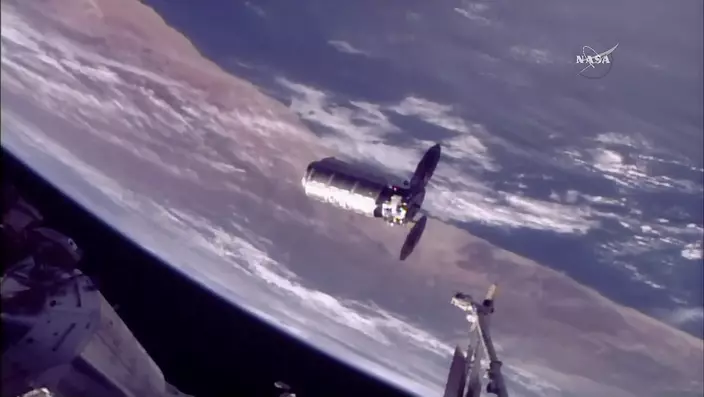
The International Space Station's robotic arm reaches to capture the Cygnus cargo spacecraft, Tuesday, Nov. 14, 2017, 260 miles (418 kms.) above the earth. (NASA TV via AP)
In all, the capsule contains nearly 4 tons of cargo. It's named the S.S. Gene Cernan in honor of the last man to walk on the moon, who died in January.
The experiments include mealworms and micro clover, sent up by high school students.

The Cygnus cargo spacecraft moves towards the International Space Station, Tuesday, Nov. 14, 2017, 260 miles (418 kms.) above the earth. (NASA TV via AP)
The supply ship will remain at the space station until the beginning of December, when it's cut loose with a load of trash. It will hover close to the orbiting lab as part of an experiment, then several mini satellites will be released and it will burn up in the atmosphere on re-entry.
SpaceX, NASA's other prime shipper, will make a delivery next month.
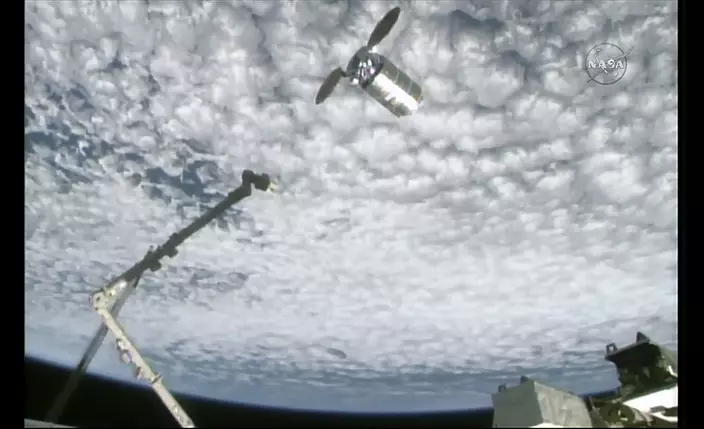
The International Space Station's robotic arm reaches to capture the Cygnus cargo spacecraft, Tuesday, Nov. 14, 2017, 260 miles (418 kms.) above the earth. (NASA TV via AP)
CAPE CANAVERAL, Fla. (AP) — After years of delays and stumbles, Boeing is finally poised to launch astronauts to the International Space Station for NASA.
It’s the first flight of Boeing’s Starliner capsule with a crew on board, a pair of NASA pilots who will check out the spacecraft during the test drive and a weeklong stay at the space station.
NASA turned to U.S. companies for astronaut rides after the space shuttles were retired. Elon Musk's SpaceX has made nine taxi trips for NASA since 2020, while Boeing has managed only a pair of unoccupied test flights.
Boeing program manager Mark Nappi wishes Starliner was further along. “There’s no doubt about that, but we’re here now.”
The company's long-awaited astronaut demo is slated for liftoff Monday night.
Provided this tryout goes well, NASA will alternate between Boeing and SpaceX to get astronauts to and from the space station.
A look at the newest ride and its shakedown cruise:
White with black and blue trim, Boeing's Starliner capsule is about 10 feet (3 meters) tall and 15 feet (4.5 meters) in diameter. It can fit up to seven people, though NASA crews typically will number four. The company settled on the name Starliner nearly a decade ago, a twist on the name of Boeing’s early Stratoliner and the current Dreamliner.
No one was aboard Boeing’s two previous Starliner test flights. The first, in 2019, was hit with software trouble so severe that its empty capsule couldn’t reach the station until the second try in 2022. Then last summer, weak parachutes and flammable tape cropped up that needed to be fixed or removed.
Veteran NASA astronauts Butch Wilmore and Suni Williams are retired Navy captains who spent months aboard the space station years ago. They joined the test flight after the original crew bowed out as the delays piled up. Wilmore, 61, is a former combat pilot from Mount Juliet, Tennessee, and Williams, 58, is a helicopter pilot from Needham, Massachusetts. The duo have been involved in the capsule’s development and insist Starliner is ready for prime time, otherwise they would not strap in for the launch.
“We’re not putting our heads in the sand,” Williams told The Associated Press. “Sure, Boeing has had its problems. But we are the QA (quality assurance). Our eyes are on the spacecraft.”
Starliner will blast off on United Launch Alliance’s Atlas V rocket from Cape Canaveral Space Force Station. It will be the first time astronauts ride an Atlas since NASA’s Project Mercury, starting with John Glenn when he became the first American to orbit the Earth in 1962. Sixty-two years later, this will be the 100th launch of the Atlas V, which is used to hoist satellites as well as spacecraft.
“We’re super careful with every mission. We’re super, duper, duper careful" with human missions, said Tory Bruno, CEO of ULA, a joint venture of Boeing and Lockheed Martin.
Starliner should reach the space station in roughly 26 hours. The seven station residents will have their eyes peeled on the approaching capsule. The arrival of a new vehicle is "a really big deal. You leave nothing to chance,” NASA astronaut Michael Barratt told the AP from orbit. Starliner will remain docked for eight days, undergoing checkouts before landing in New Mexico or elsewhere in the American West.
Both companies’ capsules are designed to be autonomous and reusable. This Starliner is the same one that made the first test flight in 2019. Unlike the SpaceX Dragons, Starliner has traditional hand controls and switches alongside touchscreens and, according to the astronauts, is more like NASA’s Orion capsules for moon missions. Wilmore and Williams briefly will take manual control to wring out the systems on their way to the space station.
NASA gave Boeing, a longtime space contractor, more than $4 billion to develop the capsule, while SpaceX got $2.6 billion. SpaceX already was in the station delivery business and merely refashioned its cargo capsule for crew. While SpaceX uses the boss' Teslas to get astronauts to the launch pad, Boeing will use a more traditional “astrovan” equipped with a video screen that Wilmore said will be playing “Top Gun: Maverick.”
One big difference at flight’s end: Starliner lands on the ground with cushioning airbags, while Dragon splashes into the sea.
Boeing is committed to six Starliner trips for NASA after this one, which will take the company to the station’s planned end in 2030. Boeing’s Nappi is reluctant to discuss other potential customers until this inaugural crew flight is over. But the company has said a fifth seat will be available to private clients. SpaceX periodically sells seats to tycoons and even countries eager to get their citizens to the station for a couple weeks.
Coming soon: Sierra Space’s mini shuttle, Dream Chaser, which will deliver cargo to the station later this year or next, before accepting passengers.
The Associated Press Health and Science Department receives support from the Howard Hughes Medical Institute’s Science and Educational Media Group. The AP is solely responsible for all content.

Boeing's Starliner capsule atop an Atlas V rocket is rolled out to the launch pad at Space Launch Complex 41, Saturday, May 4, 2024, in Cape Canaveral, Fla. NASA astronauts Butch Wilmore and Suni Williams will launch aboard to the International Space Station, scheduled for liftoff on May 6, 2024. (AP Photo/Terry Renna)

Boeing's Starliner capsule atop an Atlas V rocket is rolled out to the launch pad at Space Launch Complex 41, Saturday, May 4, 2024, in Cape Canaveral, Fla. NASA astronauts Butch Wilmore and Suni Williams will launch aboard to the International Space Station, scheduled for liftoff on May 6, 2024. (AP Photo/Terry Renna)
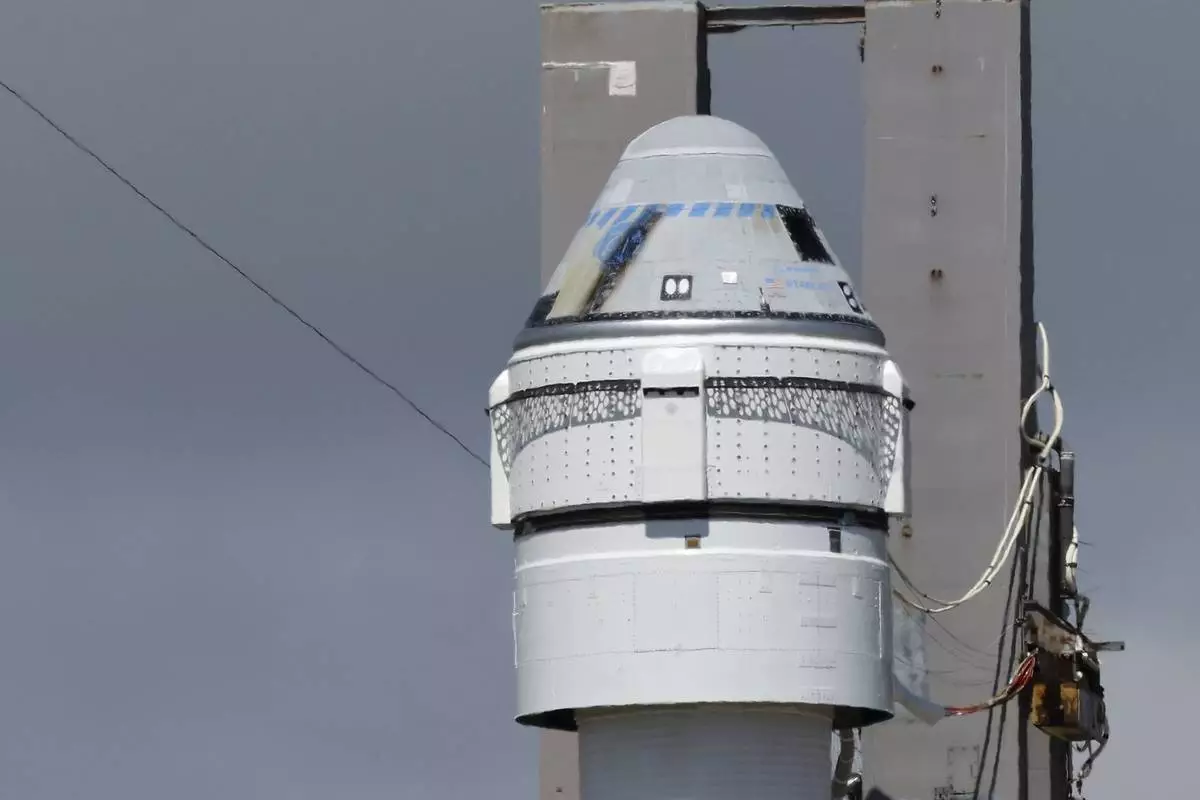
Boeing's Starliner capsule atop an Atlas V rocket is rolled out to the launch pad at Space Launch Complex 41, Saturday, May 4, 2024, in Cape Canaveral, Fla. NASA astronauts Butch Wilmore and Suni Williams will launch aboard to the International Space Station, scheduled for liftoff on May 6, 2024. (AP Photo/Terry Renna)
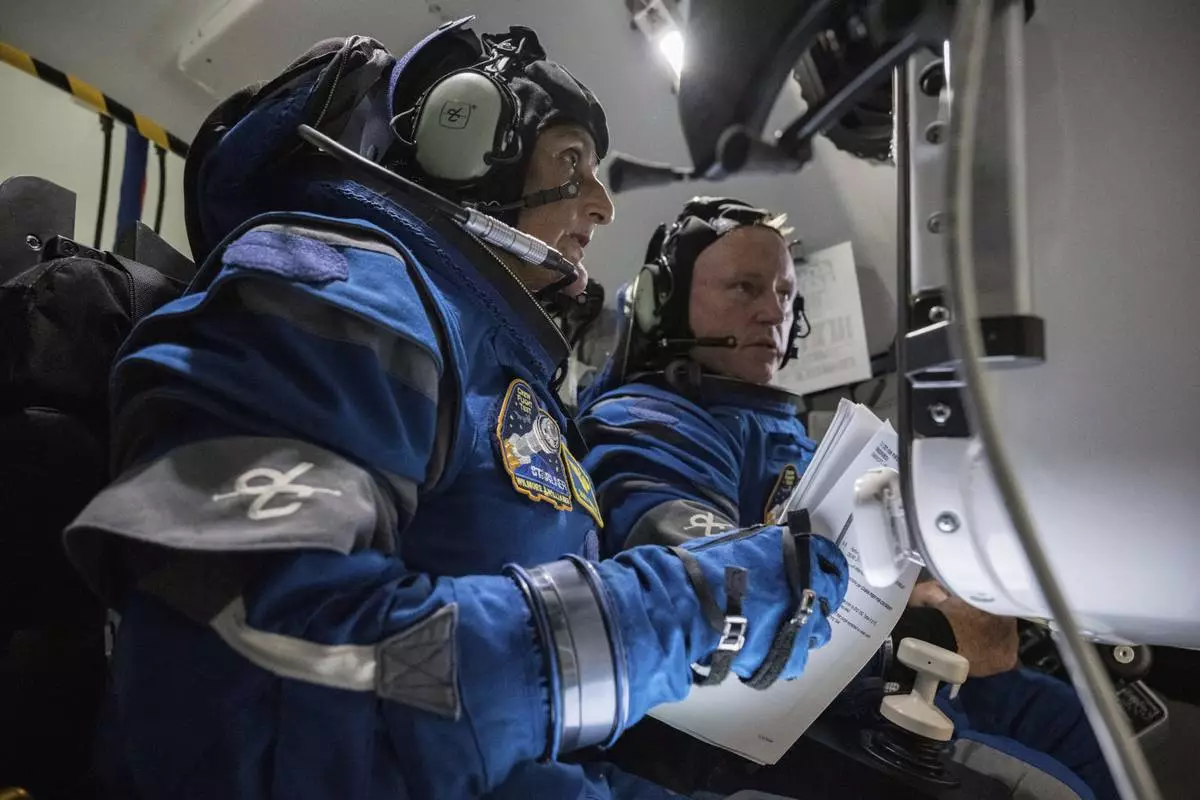
Boeing Crew Flight Test crew members Suni Williams and Butch Wilmore work in the Boeing Starliner simulator at the Johnson Space Center in Houston on Nov. 3, 2022. The first flight of Boeing’s Starliner capsule with a crew on board is scheduled for Monday, May 6, 2024. (NASA/Robert Markowitz)
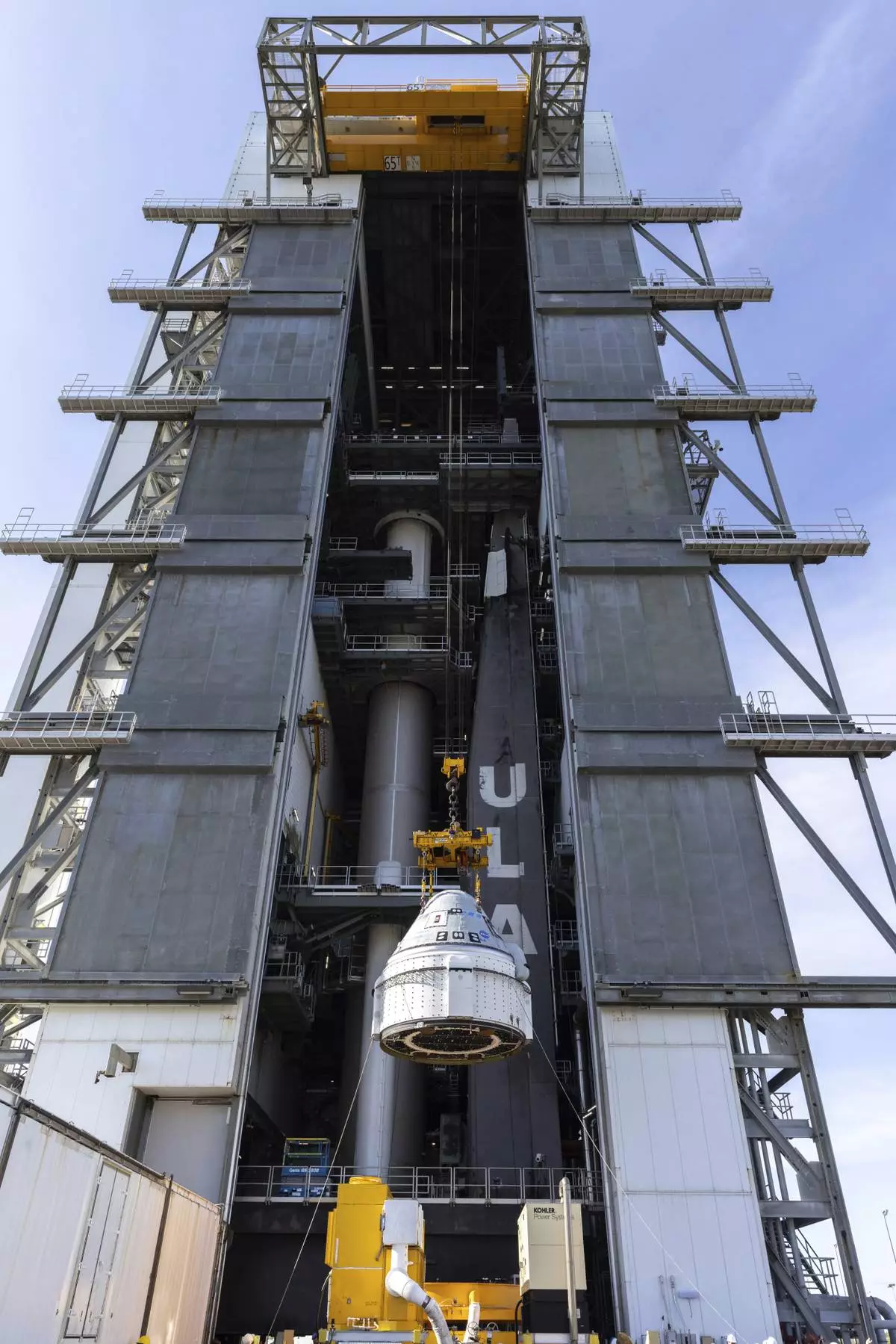
In this photo provided by NASA, the Boeing Starliner spacecraft is lifted at the Vertical Integration Facility at Space Launch Complex-41 at Cape Canaveral Space Force Station in Florida on Tuesday, April 16, 2024, for mounting on a United Launch Alliance Atlas V rocket for NASA's Boeing Crew Flight Test to the International Space Station for the agency's Commercial Crew Program. The first flight of Boeing’s Starliner capsule with a crew on board is scheduled for Monday, May 6, 2024. (Kim Shiflett/NASA via AP)

NASA's Boeing Crew Flight Test astronauts Suni Williams and Butch Wilmore exit the Neil A. Armstrong Operations and Checkout Building at the agency's Kennedy Space Center in Florida during a mission dress rehearsal on Friday, April 26, 2024. The first flight of Boeing’s Starliner capsule with a crew on board is scheduled for Monday, May 6, 2024. (Frank Micheaux/NASA via AP)
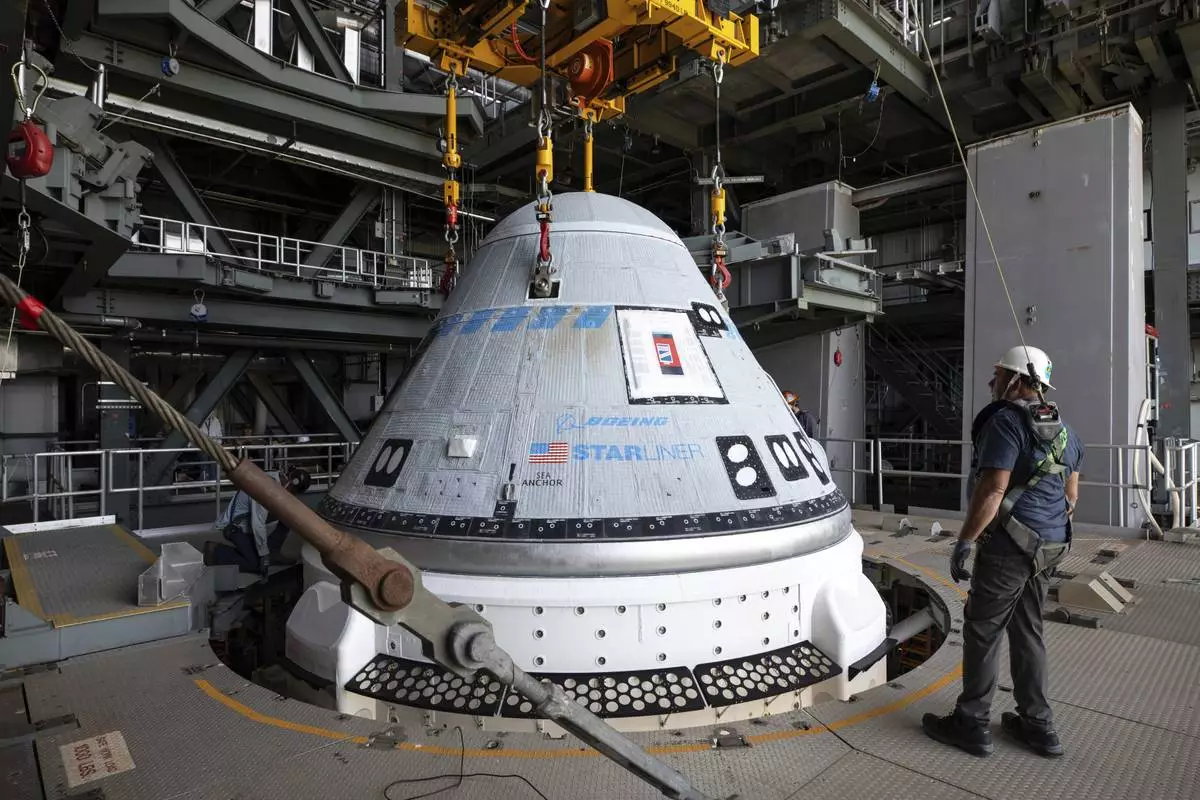
In this photo provided by NASA, the Boeing Starliner spacecraft is lifted at the Vertical Integration Facility at Space Launch Complex-41 at Cape Canaveral Space Force Station in Florida on Tuesday, April 16, 2024, for mounting on a United Launch Alliance Atlas V rocket for NASA's Boeing Crew Flight Test to the International Space Station for the agency's Commercial Crew Program. The first flight of Boeing’s Starliner capsule with a crew on board is scheduled for Monday, May 6, 2024. (Kim Shiflett/NASA via AP)















